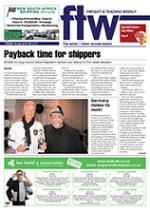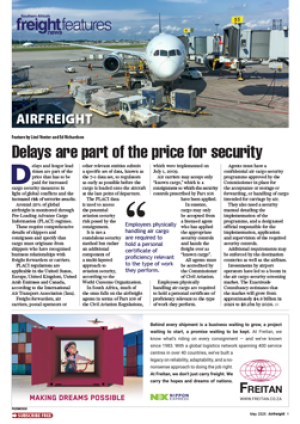Fully imported components
are keeping the wheels of
South Africa’s newest vehicle
assembler – the FAW truck
plant in Port Elizabeth –
turning.
FAW is geared up to produce
5000 medium heavy vehicles a
year for the South African and
African markets, according
to FAW South Africa chief
executive officer Yusheng
Zhang.
About 40% of the planned
production will be supplied
into the South African market,
with the remaining 60% being
exported.
The plant is using 100%
imported components, which
protects it from the current
metalworkers’ strike which has
seen component manufacturers
in South Africa halting
production.
A large number of Chinese
managers and supervisors were
also evident on the factory floor
during an official tour.
FAW’s ramping up of
production has helped
maintain volumes through the
two Port Elizabeth ports, which
lost Ford imports to Durban
earlier this year.
The loss of Ford components
will be made up in part by
increased supply of engines
and components from the Ford
engine plant in Struandale,
Port Elizabeth, to the global
Ford network.
Ford chose the day of the
FAW launch to announce that
it was adding a third shift at its
plant in order to meet demand.
Transnet National Ports
Authority figures show that in
June the ports of Ngqura and
Port Elizabeth handled a total
of 70 678 TEUs.
This is significantly less than
the 84 720 handled by the two
ports in the same month of
2013, with Ngqura showing the
biggest decline.
This could also be attributed
to the strike by Numsa
members in the port.
South African government
support for the Chinese
investment was signalled by
the presence of president Jacob
Zuma and trade and industry
minister Rob Davies at the
launch.
Speaking after keeping
delegates waiting for more
than three hours, Zuma said
the government remained
committed to its Vision 2020
strategy which aimed to
double local vehicle production
“and broaden and deepen
component manufacture by
the year 2020”.
With widely reported
rumours of European and
American manufacturers
reconsidering their South
African operations, the
country is looking to Chinese
manufacturers to hit the
target.
Pepi Silinga, chief
executive officer of the Coega
Development Corporation
(CDC), told delegates at the
launch that the CDC was
in talks with other Chinese
manufacturers.
“We are pushing other
OEMs (original equipment
manufacturers). One is close to
committing. Also from China.”
The FAW plant is in
the Coega Industrial
Development Zone.
Davies used the opening of
the FAW plant to announce
that regulations required to
include the medium and heavy
commercial vehicles in the
new automotive production
development programme
(APDP) were close to
finalisation.
It is known that FAW
management were concerned
by the delays in the regulations.
Davies did not specify how
many trucks would have to be
manufactured or assembled to
meet the requirement.
FAW also has plans to
produce 35 000 passenger
vehicles a year in the Coega
IDZ.
CAPTION 1
The new R600-million FAW production facility in Port Elizabeth.
CAPTION 2
After keeping delegates waiting for more than three hours, President Jacob Zuma, pictured
here with Minister of Trade and Industry Dr Rob Davies at the FAW plant, said the government
remained committed to its Vision 2020 strategy for the automotive industry.

